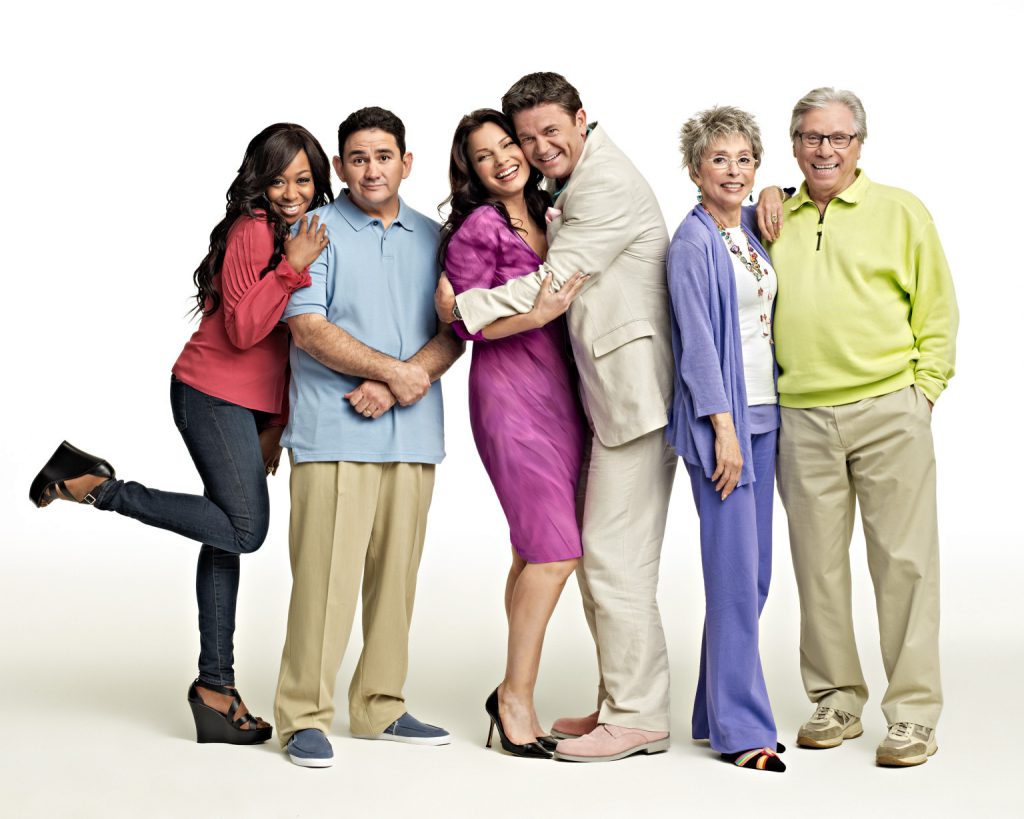
 I first ran across the name “Heather Havrilesky” back in 2011, when The New York Times Magazine published a column of hers comparing the TV shows Friday Night Lights and Glee. What she wrote knocked me flat, and formed the basis of one of our first posts to go (relatively) viral. Here was someone musing on our favorite themes in a national outlet, with a wit and compassion that we could only dream of mustering.
I first ran across the name “Heather Havrilesky” back in 2011, when The New York Times Magazine published a column of hers comparing the TV shows Friday Night Lights and Glee. What she wrote knocked me flat, and formed the basis of one of our first posts to go (relatively) viral. Here was someone musing on our favorite themes in a national outlet, with a wit and compassion that we could only dream of mustering.
Since then, seldom a week has passed when I haven’t been on the lookout for her by-line. Because no matter what the topic, Havrilesky’s knack for discerning “the story beneath the story” is uncanny. She’s got an ear for cultural imperatives and self-justification mechanisms–and where they turn the corner into idolatry religious territory–that never ceases to amaze/humble me. Truth is, we probably owe her some royalties at this point. Here are just a few times we’ve ripped her off:
- Clear Eyes, Full Hearts, Can’t Win?
- Considering Our “Mommy” Problem
- You’re Playing Wrong! The Gamification of Parenting
- The Jennifer Lawrence-Anne Hathaway Carnival Ride
- Lonely Ladies and Distracted Dudes
- Salvation by Sweat Alone
- How to Play the Bully Card
- The God of Tidying Up Hates Me
- The Very Definition of Marriage (10 Years In)
Doubleday recently published a collection of Heather’s much-loved existential advice column, “Ask Polly”, under the title How To Be a Person in the World. I’d describe the book as a deluge of empathy that’s not averse the occasional blast of truth-telling (or well-placed expletive). The fact that most of the empathy is directed at a demographic that it is increasingly acceptable to despise, i.e. staunchly first-world (AKA entitled) millennials, only ups the pastoral ante. Heather really cares–as in, 3000 words per response–about people you’re not supposed to care about.
Anyway, when we decided that the next issue of The Mockingbird would cover mental health, hers was the first name that sprung to mind as someone to interview about the anxieties and emotional gymnastics of modern life. You’ll have to wait for the issue to read our conversation (it was awesome). But for the sake of anticipation, the review of How To Be a Person in the World that Carrie Battan wrote for The New Yorker does a fair job of capturing the appeal:
The subtitle of “How to Be a Person in the World” describes “Ask Polly” as a “guide through the paradoxes of modern life.” It’s not unusual for advice columns to attract a disproportionately female readership, but “Ask Polly” ’s mode of existential advice focusses especially on the behavioral expectations and constraints that modern young women face. Havrilesky’s readers have spent their lives juggling perfectionism and easygoingness, self-acceptance and obsessive self-improvement, conventional emotional steeliness and feminist-sanctioned forms of emotional intensity. “I don’t feel chill,” they all seem to be saying, “and yet I want to be perceived as a chill person—how do I manage this?” If Havrilesky has one overarching worldview, it is that women should err on the side of self-acceptance over self-improvement, emotional sensitivity over reserve, non-chill over chill… She spends most of her columns giving her readers unwavering permission to feel their feelings…
That’s not all she’s doing, actually. In column after column, Havrilesky dismantles the inflated anthropologies her readers have unconsciously imbibed (and to which they’ve shackled their wellbeing). She displays a preternatural grip of the counterintuitive truth that a more sober understanding of human nature, instead of producing defeatism or despair, conjures compassion for both others and oneself.
Later, Battan points out something about the book that struck me too, namely, that Heather/Polly is often at her best, and most unpredictable, when defending cultural norms that she senses are less than fashionable to her audience. Again, while Polly is always “on the side” of her advice-seekers (a la a good therapist/minister), she can also smell it from a mile away when someone is trying to get her to justify their selfish or dysfunctional behavior. Battan writes:
In one column, she provides a much-needed jolt to a woman who has mistaken her own quirks for superiority: “Your assertion that you are categorically ‘weird’ while others are categorically ‘normal’ . . . strikes me as a bit childish,” she writes… [Havrilesky] is admirably hard-nosed on the subject of infidelity: “Don’t tell yourself a story about how special you are just because you can lure a guy away from his girlfriend,” she writes to a woman who can’t help but attract attached men. “That’s not some special honor. That’s embarrassing.” And she has a surprisingly strong belief in the “unsung glory of marriage.”
The only bummer about the book is that it means we’ll have to wait a bit longer for a collection of her criticism, which I suspect might resonate a bit more broadly, at least with those who find the advice-column format to be a non-starter.
One such example, which we’ve never highlighted (beyond a weekender), would be the tour-de-force she wrote back in 2011, “The Divorce Delusion”. A child of divorce herself, the piece finds Heather extrapolating from Fran Drescher’s short-lived sitcom “Happily Divorced” and the exploding popularity of the Real Housewives franchise to surface an eerily “buoyant attitude” emerging in our culture vis-a-vis divorce, which she contrasts with the painful depiction of a marriage ending in the Oscar-winning 1979 drama Kramer vs Kramer.

In her view, these shows serve as evidence of a disturbing wider trend in US culture: the sad compulsion for recasting painful events as triumphant rites of passage, an intolerance of life’s essential unmanageability. It’s the same basic idea that entrepreneurs and educators trumpet when they talk about failure not as failure but as stepping stone to success. Or, to draw the religious parallel, when Christians pole-vault over Good Friday (and its fundamental heaviness) to get to Easter, or turn the theology of the cross into a theology of glory, or “a theology of glory about the cross”. It invariably backfires. She writes:
These days, divorce doesn’t sob and drink to excess; it dons a joyful Kabuki mask to obscure the anguish of marital bliss gone sour… Leave it to the so-called “Real Housewives,” the sideshow freaks of America’s family circus, to embrace this happily divorced myth with gusto. That show regularly paints divorce as an invigorating process of renewal — sort of like a spa weekend but with lawyers where the masseuses should be. These women, who could mine years of deep-seated contempt from a casual misunderstanding with a clerk at Bergdorf Goodman, each perform the same valiant postdivorce routine: the proclamation that the failed marriage is all in the past (even if it’s yet to be finalized), followed by the sweeping gesture of a manicured hand, “The Price Is Right” style, to showcase the good body and the good life that “he” left in his wake.
What’s strange about this defiantly positive take on divorce is that the taint of a broken marriage hasn’t diminished in real life, at least not as much as we might assume. According to a recent New York Times article, divorce has become less common among the demographic of college-educated Americans (only 11 percent of them divorce in the first 10 years of marriage, compared with 37 percent for the greater population), and those who do divorce report feeling stigmatized by their peers. These children of boomers may be avoiding (and denouncing) divorce more vehemently than their parents did in part because they know, from personal experience, the blunt emotional impact it can have on children. And the current cheery cultural take on divorce may be an odd product of this renewed stigma. We don’t want our kids to repeat our experiences, and we certainly don’t want to relive those experiences on our TV or movie screens…
If [Kramer vs. Kramer were to be remade today], the divorce would be little more than an anticlimax, after which Joanna hires a life coach, rediscovers meditation, joins Match.com and has her no-fault documentation under way on LegalZoom within a few hours. Ted, meanwhile, hires a phalanx of nannies to escort an unfazed Billy from one after-school activity to the next. Finally, the couple calmly sifts through their assets with the help of an encouraging mediator. The moral to this modern divorce story? If everyone involved doesn’t emerge stronger, happier and more productive, well, then, in the vague parlance of today’s progressive preschool, someone is making bad choices.
The notion that there’s some “right” choice for every life challenge fits neatly into the control-freak mind-set of our current moment. We’ve developed a real talent for transforming neutral or negative events into triumphant rites of passage. This may represent Oprah’s most enduring legacy: the relentless conviction that even the most unpredictable, unmanageable problems can be stuffed into the familiar packaging of “catharsis.” Rather than acknowledging residual pain or lingering trauma, we’re urged to embrace each story as a wake-up call or a breakthrough on the road to self-fulfillment…
Stories of divorced couples peacefully co-parenting and becoming wonderful lifelong friends contribute to this expectation that, if we’re not emotionally overachieving with a person who usually feels more like a mortal enemy than a soulmate, that means we’re petty, unenlightened thugs of the lowest order. This is partly what makes Louis C. K. or Larry David so appealing in contrast. By embracing their petty thug status and lamenting (selfishly, lazily) the perils of divorce, they offer some respite from a world where you can’t so much as forget your reusable grocery bags without feeling like an enemy of the state.
Kramer vs. Kramer would most likely get panned today as a depressing Debbie Downer of a film. But watching it again as an adult left me with a satisfying sense that I endured something profoundly sad and emerged with a new feeling of resiliency. Like Ted Kramer’s mixing up a batch of French toast through a clenched smile, sometimes the urge to reshape a tragedy into a story of hope just undermines the hope therein. We don’t need to reimagine every disaster as a tale of heroism. We don’t need to turn every funeral into a celebration. A divorce is not a birthday party or a high-school reunion or a three-day restorative spa getaway. Just as there is a time to meditate, a time to live your best life, a time to be “fierce,” there is also a time to weep openly, a time to regret everything and a time to eat big doughnuts in bed. We all have a right to our own bad choices — and a right to feel bad about them too. As Lord Byron wrote, “Sorrow is knowledge.” So for God’s sake, let’s stop rushing to get to the good part.
I doubt I’ll ever get a better opening for the amazing scene of grace that happens in Kramer vs. Kramer. All you have to know is that the woman who has accompanied Dustin Hoffman to the park (to watch his son), is not his (ex-)wife but a neighbor, fellow single parent and friend, albeit one who had counseled Dustin’s wife (played by Meryl Streep) to leave him. Nothing romantic going on, in other words. Hope you have your Kleenex ready:
You’re a Good Mother from Mockingbird on Vimeo.

COMMENTS
2 responses to “How to Be a Person in a World of Divorce Delusions”
Leave a Reply













David. So good. And that scene. Goodness. And him holding his little head.